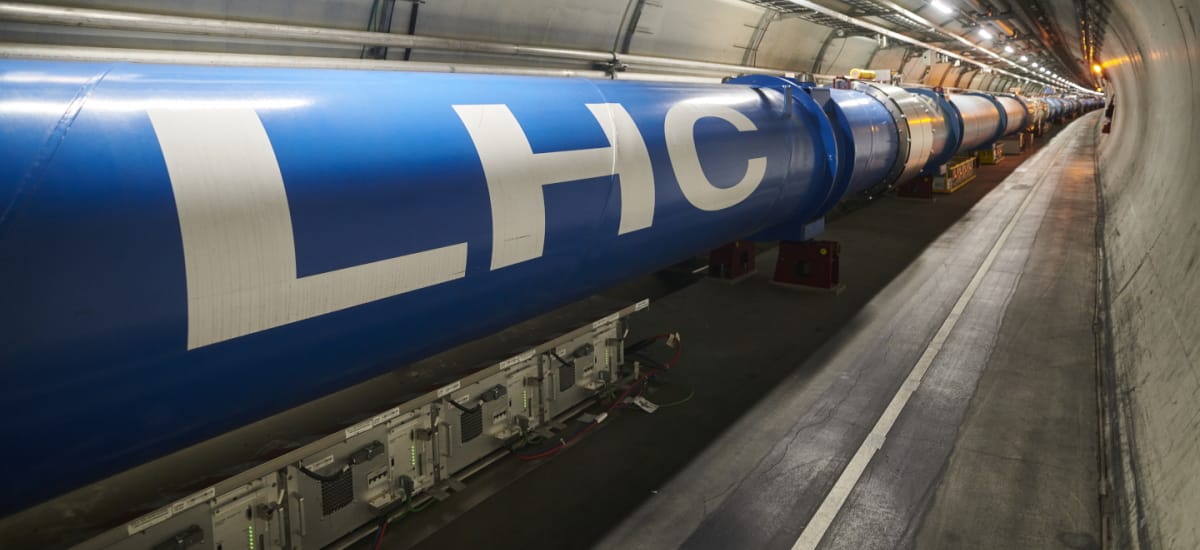Ten years since the discovery of the Higgs boson
Monday 4th Jul 2022, 2.44pm

Ten years ago, on 4 July 2012, an international collaboration of particle physicists announced to the world that they had independently observed a new particle – the Higgs boson.
The finding came out of the ATLAS and CMS experiments at the Large Hadron Collider at CERN; Oxford researchers were key contributors to the discovery and have continued to play a leading role in Higgs-boson research ever since.
The long-awaited discovery came almost 50 years after the boson was predicted by Peter Higgs and separately by François Englert and Robert Brout in 1964. Their theory explained how particles acquired mass through interactions with the Higgs field and it became a key part of the Standard Model of Particle Physics. However, confirming the theory by finding the Higgs boson was beyond the reach of experiments at the time.
After the W and Z bosons were discovered at CERN in 1983, and the top quark at Fermilab in 1995, the Higgs was the remaining ‘missing piece’ in the Standard Model.
The Large Hadron Collider (LHC) began operation in 2008 and started colliding high-energy protons in 2010. The Higgs could be produced by various processes, but as it only lives momentarily, the challenge was to identify its signature. The ATLAS semiconductor tracker (SCT) detector, assembled in Oxford was used to identify the electron and muon tracks produced by W boson decays.
Professor Chris Hays and the Oxford group played a leading role in the study of the Higgs decaying into other particles while Professors Daniela Bortoletto and Ian Shipsey played leading roles in building the CMS silicon pixel detector, which would prove crucial in the search for the Higgs.
The discovery of a new particle was announced on 4 July 2012. Weeks later, the experiments published their observations in Physics Letters B, including the Oxford group’s contributions to an observed excess of W-boson pairs at ATLAS. In 2013, The Nobel Prize in physics was awarded to François Englert and Peter Higgs.
During the ten years since the discovery, Oxford researchers have analysed data to identify and measure the ways the Higgs boson can decay. In 2018, Oxford was involved in the first observation of the Higgs boson decaying to a pair of b-quarks. The first evidence of the very rare process where a Higgs boson decays to two muons was announced in 2020.
The group are now using the Higgs boson to probe for new scientific phenomena and search for answers to mysteries like the nature of dark matter and the origin of the matter-antimatter asymmetry of the universe. The Higgs boson is a unique particle. It can interact with any particle with mass. Studying these interactions could be a key to further understanding our universe.
The LHC shut down in 2018 to upgrade the accelerator and detectors. It will be starting up again for Run 3 on 5 July with the promise of more exciting discoveries to come.
